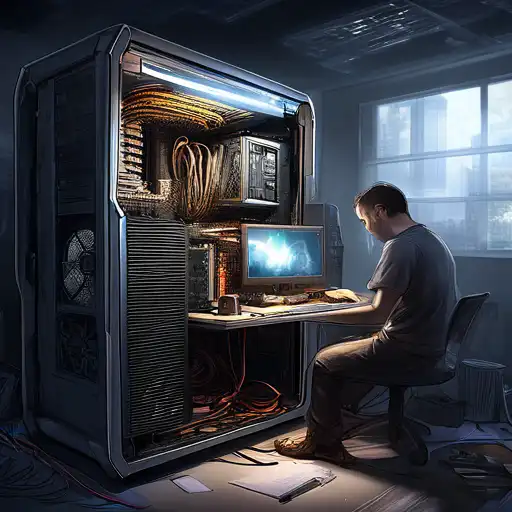Introduction to PC Building
Building your own PC can be a rewarding experience, offering not only a sense of accomplishment but also the opportunity to customize your machine to your exact needs. Whether you're a gamer, a content creator, or just someone looking for a powerful workstation, assembling your own computer allows you to select each component based on your specific requirements and budget.
Why Build Your Own PC?
There are several advantages to building your own PC, including cost savings, the ability to upgrade easily, and the satisfaction of creating something uniquely yours. Plus, you'll gain a deeper understanding of how computers work, which can be invaluable for troubleshooting and future upgrades.
Essential Components for Building a PC
Before you start, it's important to know the essential components you'll need to build a PC. Here's a list of the key parts:
- Processor (CPU): The brain of your computer, responsible for executing instructions.
- Motherboard: The main circuit board that connects all components.
- Memory (RAM): Temporary storage that your CPU uses to store data.
- Storage (SSD/HDD): Where your operating system, applications, and files are stored.
- Graphics Card (GPU): Essential for rendering images, especially important for gaming and video editing.
- Power Supply Unit (PSU): Provides power to all components.
- Case: Houses all your components and protects them.
Choosing the Right Components
Selecting the right components is crucial for building a PC that meets your needs. Consider factors like compatibility, performance, and budget. Research each component thoroughly and consider future-proofing your build by choosing slightly higher-end parts than you currently need.
Step-by-Step Guide to Building Your PC
Now that you have all your components, it's time to start building. Follow these steps to assemble your PC:
- Prepare your workspace with a clean, static-free surface.
- Install the CPU onto the motherboard carefully, aligning it correctly.
- Install the RAM into the appropriate slots on the motherboard.
- Mount the motherboard inside the case.
- Install the storage drives (SSD/HDD) into the case.
- Insert the graphics card into the PCIe slot on the motherboard.
- Connect the power supply and route cables neatly for good airflow.
- Close the case and connect your monitor, keyboard, and mouse.
Installing the Operating System
After assembling your PC, the next step is to install an operating system (OS). You can choose between Windows, Linux, or macOS (if you're using compatible hardware). Follow the installation instructions provided by the OS to complete the setup.
Final Thoughts
Building a PC may seem daunting at first, but with the right preparation and research, it's an achievable project for beginners. Not only will you end up with a machine tailored to your needs, but you'll also gain valuable knowledge and skills. Remember, the PC building community is vast and supportive, so don't hesitate to seek advice if you encounter challenges.
For more information on choosing components, check out our Guide to Choosing PC Components.
